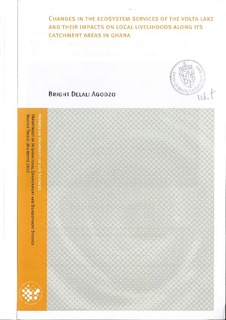| dc.description.abstract | The Volta Lake in Ghana was created due to the construction of a hydroelectric dam, named
the Akosombo dam, over the river Volta in the 1960s. This dam currently generates 1020
megawatts of electricity, which provides a cheaper and relatively non-polluting source of
electrical power to communities and industries in the country and neighbouring states.
However, the creation of the Akosombo dam has displaced communities and farmlands along
the lake due to the flooding of the lake. The lake has expanded to cover about 8,500 square
kilometres of farmlands, forests and cash crop plantations including about 700 communities,
who were later resettled into 52 resettlement communities. Consequently, houses and other
properties of these communities were lost to the flooding. Also submerged in the lake were
trees, and this caused difficulties in fishing and navigation on the lake.
This research work was therefore carried out to investigate the changes that occurred after the
construction of the dam, and the impacts on local livelihoods. About 100 respondents made
up of fisher folks, resettlement communities, irrigation farmers, local residents, local
authorities and other stakeholder institutions were sampled for data collection. The data was
collected through semi-structured interviews, focus group discussions, observations and
document analysis.
Problems associated with the dam construction included the widespread non-payment, and in
some cases inadequate payment, of compensation for land lost, crops, houses and other
properties. On the other hand, host communities were either not paid or given a meagre sum
for the lands lost to the resettlement programme. This brought about conflicts between the
settlers and their hosts. In addition, the local communities have been experiencing low fish
catch, and increased boat accidents on the lake. There has also been increase in contamination
of the lake due to its stagnant nature, and the prevalence of diseases such as malaria, cholera
and bilharzia in the local communities.
In order to reduce these negative impacts, resettlement and compensation schemes should be
adequate, prompt, geared towards meeting the needs of the recipients and implemented long
before the execution of such dam projects, and the inclusion of the affected local people in
decision making at all levels. Submerged trees should be harvested in such a way that it will
improve transportation on the lake at the same time help improve aquatic life. Effective
education and regulatory measures need to be employed to reduce contamination of the lake. | no_NO |
